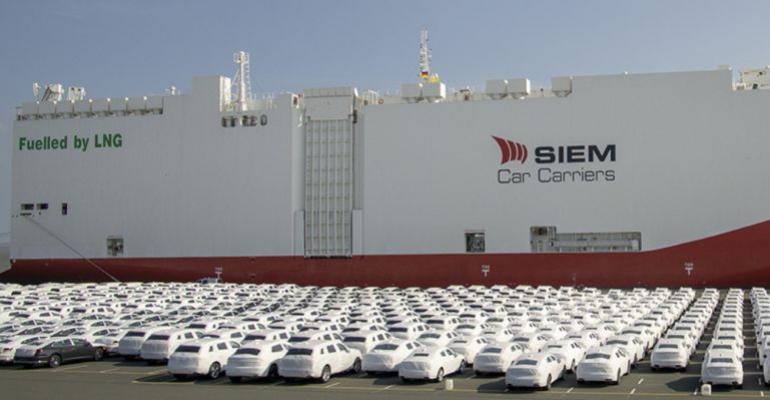On Tuesday, Siem Confucius left Emden in Germany for Veracruz in the Gulf of Mexico on a three-week voyage, under an exclusive charter by Volkswagen Group Logistics.
The LNG drive reduces carbon dioxide emissions by up to 25%, nitrogen oxide emissions by up to 30%, soot particles by up to 60% and sulphur oxide emissions by up to 100%, compared to the use of the conventional heavy fuel oil.
“We are proud to put the world's first LNG vehicle transporter of this size into service. This is an important part of our decarbonisation strategy,” emphasised Thomas Zernechel, head of Volkswagen Group Logistics.
By 2025, in accordance with the environmental mission statement ‘goTOzero’, the company aims to reduce its total net CO2 emissions by 30% and get to CO2-neutral in 2050. All transports - by water, road and rail - must be climate-friendly to achieve this.
“We have to take action now, because ships like the LNG freighter Siem Confucius and soon its sister ship Siem Aristotle will be in service for many years,” said Zernechel.
Sister ships Siem Aristotle and Siem Confucius are 200 metres long and 38 metres wide, have 13 car decks and a capacity of 7,500 ceu.
The ships are powered by 12,600 kW dual-fuel marine engines with direct injection and exhaust gas after treatment from MAN Energy Solutions. The two tanks in each ship, each holding 1,800 cubic metres, are sufficient to cover the entire distance with the fuel stowed in Europe. In addition to LNG, the car carriers could also be operated with biogas or E-gas from regenerative sources.
Copyright © 2024. All rights reserved. Seatrade, a trading name of Informa Markets (UK) Limited.
Add Seatrade Maritime News to your Google News feed.  |

